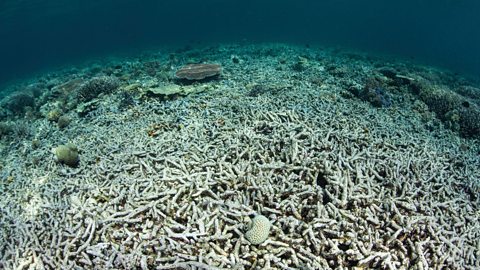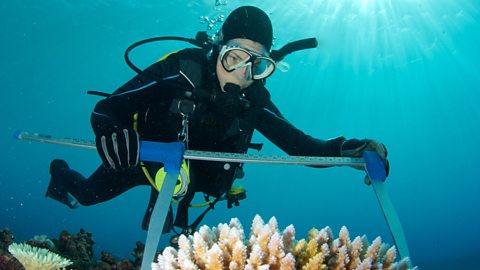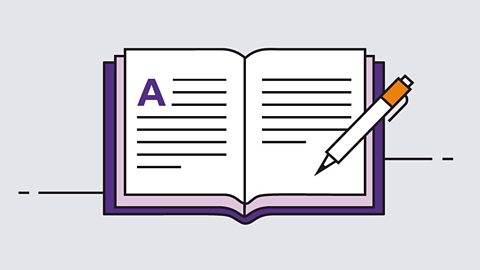Introduction to investigating language in non-fiction texts
- A non-fiction text deals with real-life events and issues and often contains facts and information.
- Non-fiction is a broad genre that might include histories, biographies, newspaper reports, diaries, letters, information leaflets and magazine articles.
- Non-fiction writers make language choices to present their viewpoint, influence the reader and create a particular effect.
Find out how to investigate language in non-fiction texts
Finding the writer's viewpoint
By investigating language choices, you can think about how and why the writer could be trying to influence the reader:
- A writer may be using persuasive language to convince the reader to agree with their viewpoint in a magazine article or to encourage them to buy something in an advertisement.
- A writer might use language to amuse or entertain the reader and present a topic in a light-hearted way.
Choice of word or phrase

It’s useful to look at how a choice of a word or phrase can change the impact of a text. For example:
- ‘The coral reef has been damaged by an increase in tourism.’
- ‘The coral reef has been devastated by an increase in tourism.’
At first glance the two statements look similar. But the choice of the word devastated increases the impact of the second example, and focuses the reader's attention on the seriousness of the issue.
Paying close attention to individual words and phrases will help you to understand what impact a writer intends.

Language patterns
It’s also useful to investigate patterns in how words and phrases are used by a writer.
A writer may deliberately use lots of positive abstract nouns - like dream, love, peace, happiness - in a perfume advertisement to give the writing a sophisticated tone.
In a piece of travel writing about rock climbing, the writer may use lots of ‘ing’ verbs - like reaching, grasping, leaping - to create a strong sense of physical drama.
Try to notice when a writer does something more than once, and think about where your attention is being directed.
Choice of language techniques

The writer may use a language technique to draw attention to an important idea or point. The effect of the language technique will depend on how it is being used. For example:
- Alliteration - repeating a particular sound. For example, ‘Poppy’s prolific poops’. In this example the alliteration helps focus the reader on this phrase. This choice also gives the writing a more humorous tone.
- Imagery - carefully selecting visually descriptive language, creating images in order to have a particular effect upon the reader. For example, ‘The reef is a graveyard of coral’. This choice of metaphor creates a serious tone and seeks to give emphasis to the issue of the destruction of coral reefs by linking it with the idea of death.
- Emotive Language - Using words that are deliberately designed to make the listener have strong feelings. These can be positive or negative. Words like love, happiness, wealth and good health make the listener feel good. Other words, such as death, illness, poverty and tears make them feel very negative. You should try to choose the words that the listener will remember.
Or a writer may choose to include information that uses language in a particular way. For example:
- Expert comment - using facts or opinions from expert sources can add strength to an argument and help to influence a reader. ‘Marine biologists predict that the coral will die off completely in the next decade’ feels convincing because ‘marine biologists’ sound like they know what they are talking about.
- Statistics - using a numerical statistic may give writing more credibility or authority. ‘Over 90 per cent of people voted in favour of the proposal’ suggests that significant numbers of people support the proposal and may help to persuade the reader that what is being discussed is a good idea.

Remember
Investigating language will make you more aware of the different ways that texts work to influence their readers. Writers may use language choices to shock, advise, amuse, inform, persuade - or a mixture of these. Seeing these techniques in action will also help you learn how to use them effectively in your own writing.
Test yourself
Identifying effect
What are the effects created by the language techniques here? Can you guess before you reveal the answer?
Sentence:
Your generous donations have helped us bring a touch of magic into the lives of these desperately ill children.
Effect:
The language has been chosen to make the reader feel good about themselves, as though they are kind and have made a difference, and also feel sympathetic towards the children. |
Sentence:
Only one in ten of the young people interviewed felt students had been properly consulted about the plans.
Effect:
The statistic is low and helps illustrate how badly people think things have been done. People believe statistics so it feels factual.
Sentence:
“It’s a growing trend,” notes Dr Abbott, “and it seems to be set to continue for some time.”
Effect:
The reader believes what is said because the speaker sounds qualified to know what they’re talking about.
Sentence
Like 40% of UK households, Emma’s family owns a pet.
Effect:
The matter-of-fact statistic seems like a casual or understated opening that will lead to a bigger story.
Sentence:
But beyond the top hats, tails, trouser measurements – and the tremendous tips -, what is life as a high-end tailor really like?
Effect:
The repeated letter sounds crisp and elegant, tying in with the subject matter and drawing our attention to the imagery listed so we get a sense of what will be discussed.
Sentence:
Seeing smelly, dirty rubbish dumped around our beautiful natural parklands by careless louts just fills me with rage!
Effect:
The contrast in the imagery ignites our senses of sight and smell and makes us more attuned to the argument.
Quiz
Find out how much you know in this short language quiz!
Where next?
Discover more from around Bitesize.
How to compare non-fiction texts
KS3 English

More on Non-fiction texts
Find out more by working through a topic

